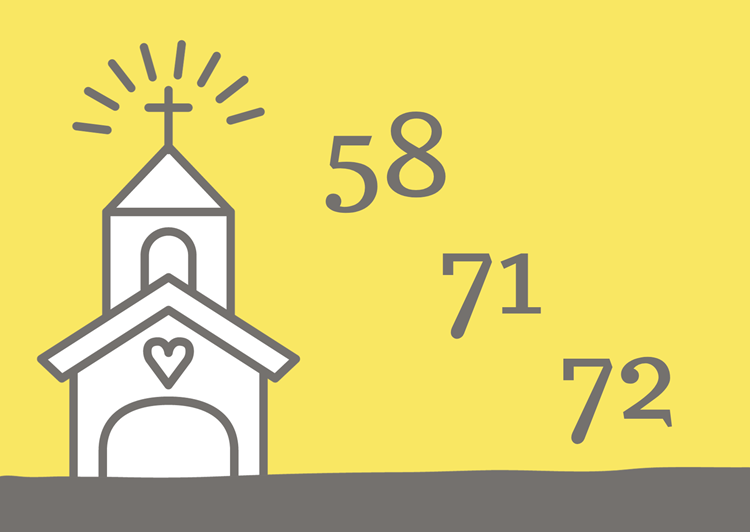Earlier this month, Public Religion Research Institute (PRRI) published Clergy and Congregations in a Time of Transformation: Findings from the 2022-2023 Mainline Protestant Clergy Survey. This wide-ranging study “considers the perspectives of mainline Protestant clergy from the seven largest mainline Protestant denominations on the cultural and political divides facing the nation, and how such divides may be impacting their own congregations.” And, it is filled with statistics that warrant increased awareness among those in the Mainline.
I’ consider three statistics below. And, I also recommend that you read and reflect on the full report.

Old and Getting Older
The median age in the United States is 38., but the median age of Mainline clergy in the study was 58 (with just 9% of these clergy in their 20s or 30s).
The greying or aging of Mainline (both clergy and parishioners) is a trend that is ongoing and one that has been explored in numerous articles in recent years. I’ve explored it here on So What Faith on occasion over the years, including:
- Giving Up the Old and White Church (March 2021)
- Mainline Protestantism = Old (July 2016)
- From Mainline to Sideline to Oldline (February 2015)
This aging has numerous causes (see Liberal Protestant Decline – Fact Check) and there are no signs indicating that this will change in the near term future.
Political Divide
Mainline clergy are more likely to identify as a Democrat than as Republican while their parishioners are more likely to identify as Republican. In rank order, denominations with the greatest percentage of clergy identifying as Democrat:
- United Church of Christ – 71%
- Presbyterian Church (USA) – 61%
- Episcopal Church and Christian Church (Disciples of Christ) – 60%
I’ve seen less data about this partisan divide than about the associated political tendencies, wjhich have long shown Mainline clergy are more liberal, on average, than those in the congregations they serve. My reflections have focused on the political nature of Christianity, reviews of related readings, and information about how the partisan makeup of clergy looks beyond Mainline Christianity:
- Politically Partisan Pastors (June 2017)
- Christianity is Always Political (February 2017)
- Recent Reading: Politics & Bible ( (February 2016)
Future of the Church
72% of Mainline clergy are optimistic about the future of the church compared to 77% of white Mainline parishioners. Notably both groups are pleased with their denomination’s leadership (clergy far less so than congregants) and 91% of Mainline clergy are proud to be a part of their respective denomination.
My interest in the future of the church is one of the reasons I started this blog back in 2009, and the majority of the more than 2,000 posts I’ve written have considered some aspect of American religious belief, behavior, and/or belonging. In the early years, I also created and regularly updated a series on the changes I felt were most likely to happen in the future
- The Future Church (v.2020) – 10 Shifts (April 2012)
- The Future Church – Top 10 Changes (February 2010)
So What?
Much more has been written about Mainline decline than about the hope Mainliners – including Mainline clergy – have for the future. Understanding the current state and how the the historical changes and challenges of the last several decades contributed to the present experience is important context for conversation about the future.
I’m among those who are optimistic about the future of the church universal as well as the Mainline church. In fact, I’m so encouraged that I’m currently pursuing ordination in the United Church of Christ (see Preaching and Ordination Update #13 for the latest on that journey).
Bonus: I’ve long appreciated the work of PRRI and have mentioned it numerous times, including
- Consistently Progressive Christians Outnumber Consistently Conservative Christians (September 2020)
- Partisan Polarization – 3 Critical Issues (November 2019)
- Valentine’s Expectations (February 2013)